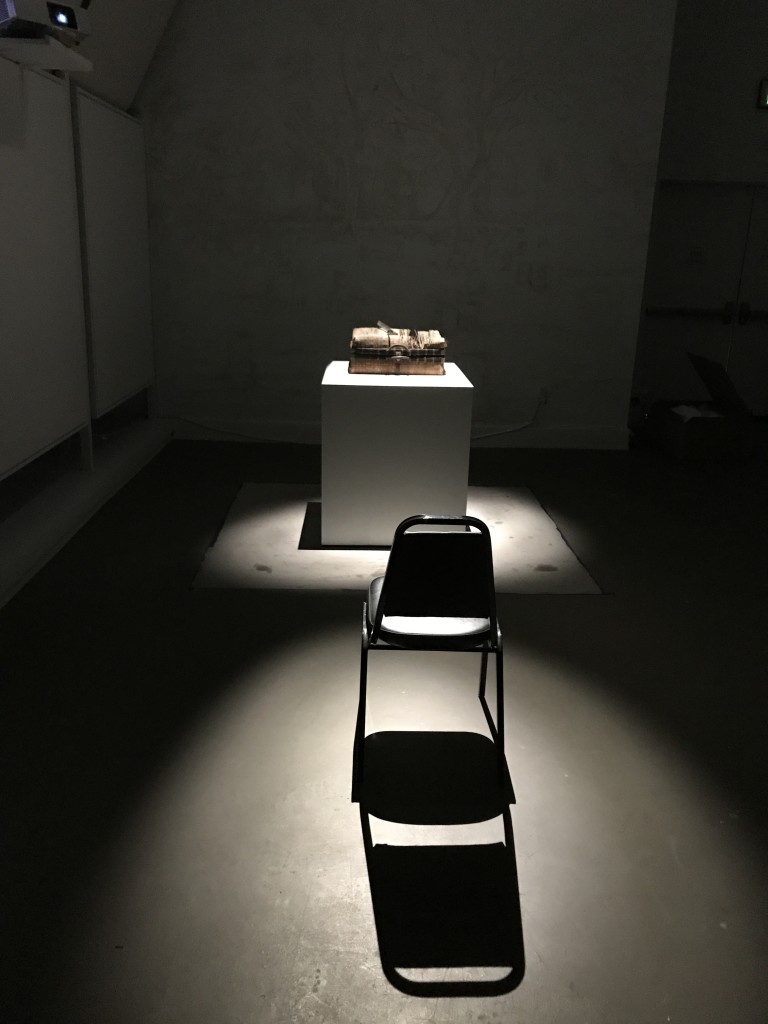
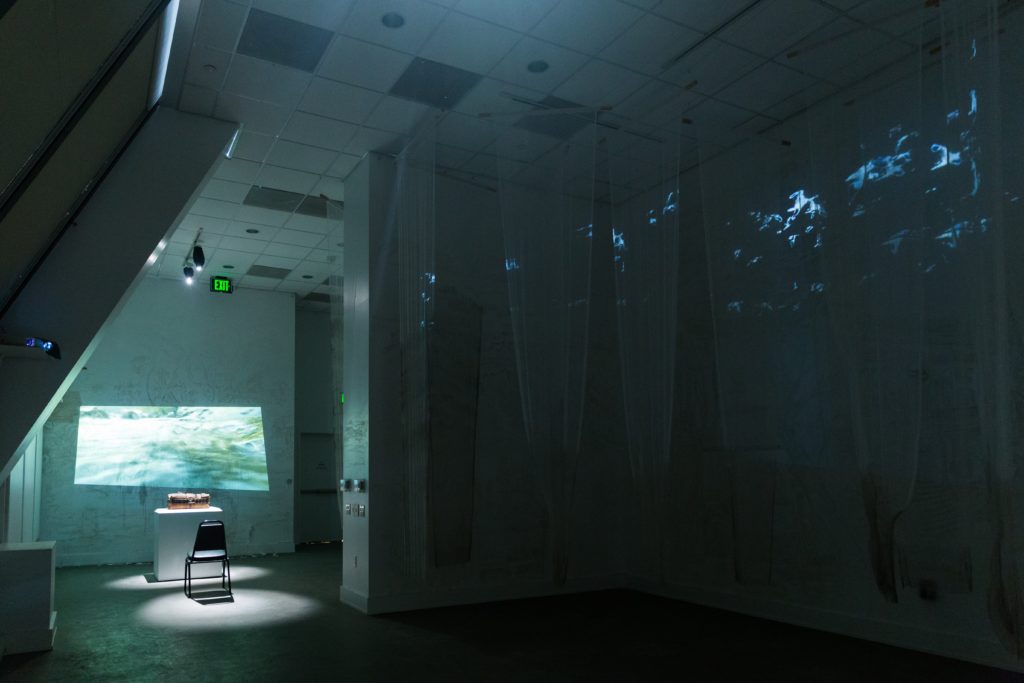
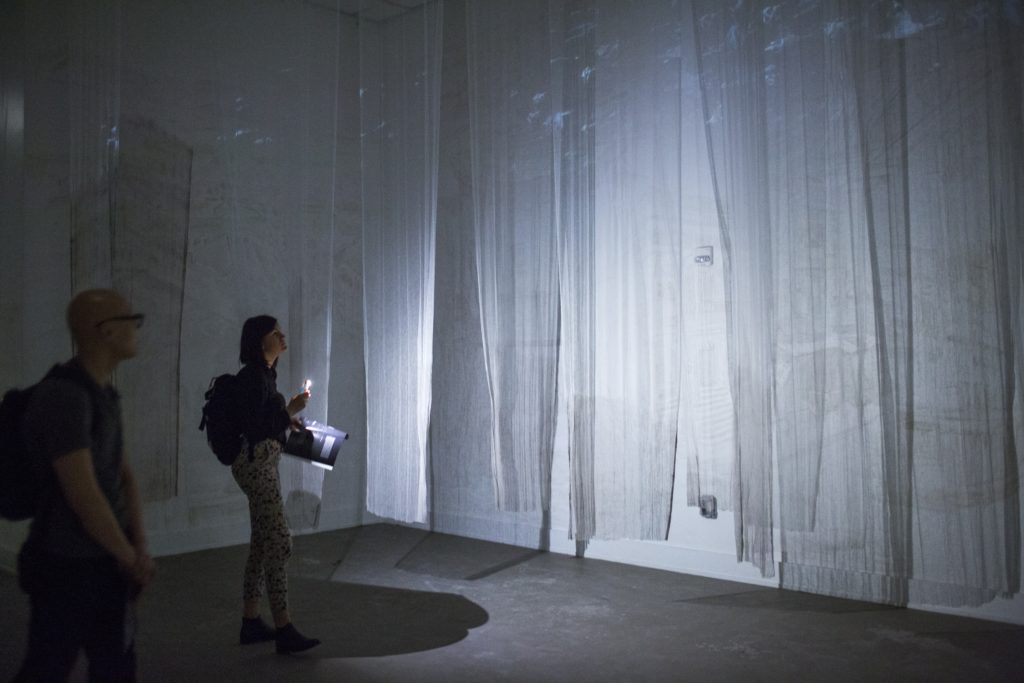
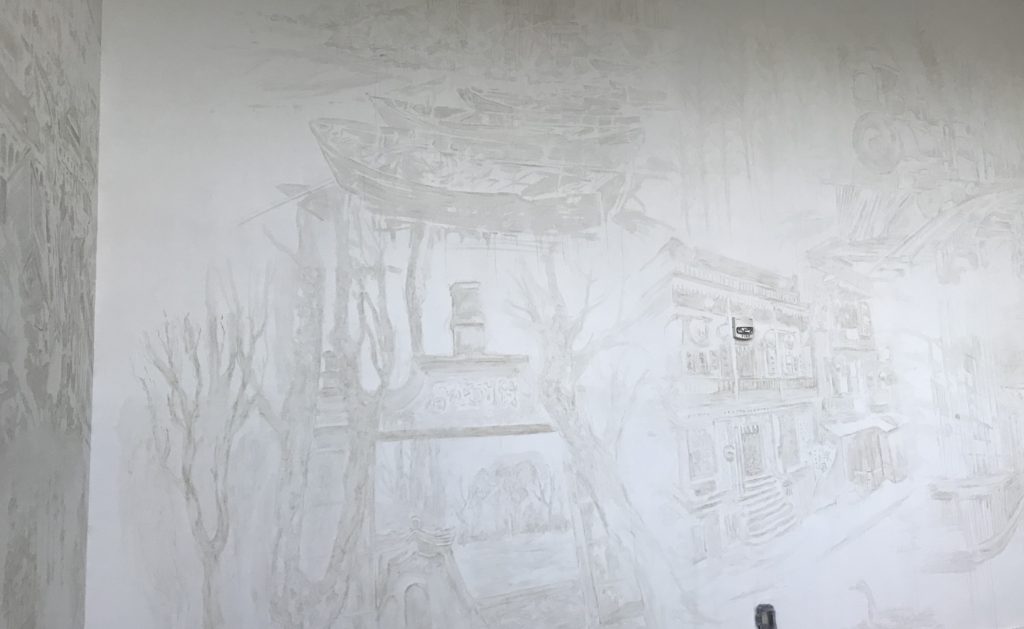
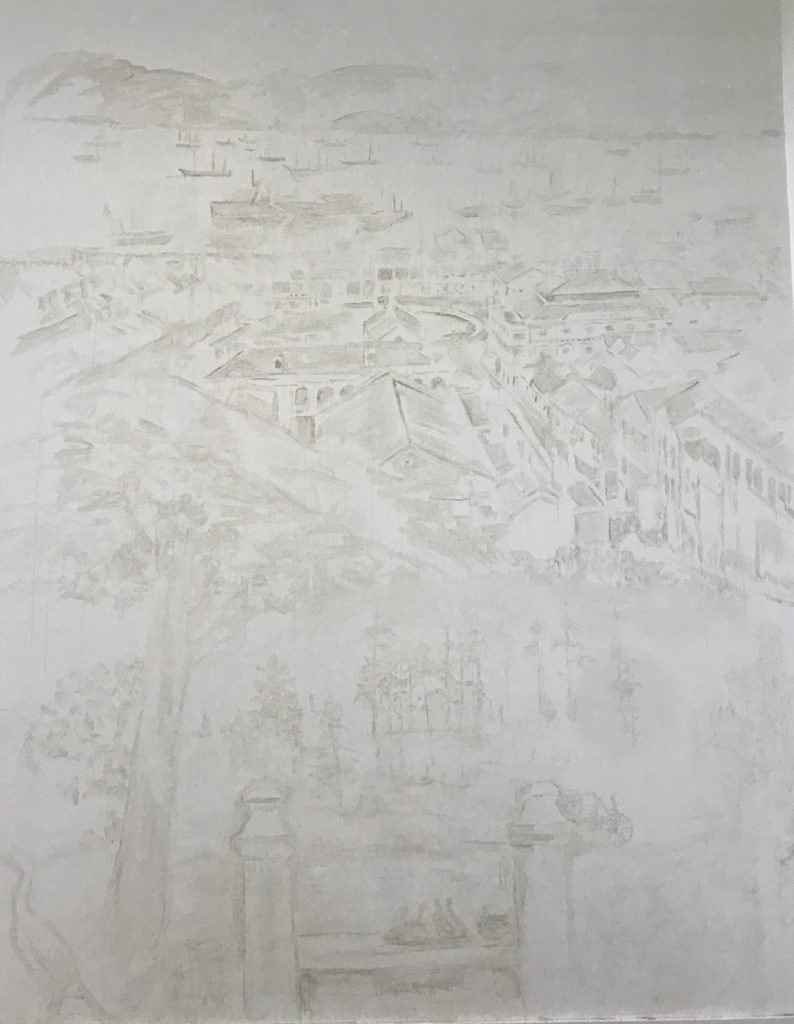
(Ashes from Coffin Home, Ashes from Tin How Temple, chair, historic bone box, fabric, projections, and sound. Photo credit Chinese Culture Center, Pamela Gentile and Zhengdong Ye)
“Chinese Culture Center (CCC) is pleased to present Requiem, a large-scale art installation by contemporary artist Summer Mei-Ling Lee specially commissioned to illuminate the unique story of the role of a Hong Kong charity, Tung Wah Group of Hospitals (TWGHs), in the history of the Chinese diaspora in San Francisco and across the nation.
After the passage of the Chinese Exclusion Act of 1882, it became difficult to bury Chinese bodies in the United States. The Chinese immigrants already living here were considered permanent aliens until its repeal in 1943, excluded from citizenship and also unable to return if they left the country. As such, most were not at all eager to be laid to rest permanently so far from ancestral land, running the risk of being forgotten in family ritual worship. Secondary burial—exhuming the dead, cleaning the bones, and then burying them again—had a long tradition in Southern China as well.
Each paid $5 to one of the many family associations that were established in America in the earliest years of Chinese immigration in order to ensure that their bones made it back home. At the heart of this repatriation effort was Tung Wah Hospital, Colonial Hong Kong’s first hospital and charity for the care of Chinese people, which oversaw the respectful return of tens of thousands of bone boxes, housing them temporarily in the Tung Wah Coffin Home, facilitating family claims of the remains, and even delivering them back to home towns and villages.
On the occasion of the 135th anniversary of the Chinese Exclusion Act and in an effort to bring new attention to the Hospital’s critically important role in the history of the Chinese American diaspora, CCC with support from the present day TWGHs commissioned third generation Chinese-American contemporary artist Summer Mei Ling Lee to create a new work in response to this legacy.
In early 2017, Lee made her way to Hong Kong where hospital historians shared the story of their remarkable efforts, and, on one of her visits to the Coffin Home, opened for her one of the many unclaimed bone boxes they continue to protect. This one, like one third of the boxes shipped over the seas from the United States, was empty—a ‘soul summoning box’ with just a name in it for an individual whose body was likely vandalized or in some way unrecoverable. Lee peered inside at the name and cried.
Requiem is the artist’s effort to give expression to that moment. In an installation work that occupies the entirety of CCC’s gallery, Lee investigates the experience of dislocation and immigration and pays homage to TWGHs’ extraordinary effort to seek a final resting place for so many and its continuing custodianship of scores of forgotten ancestors.
The installation work leads visitors through darkened galleries where hanging scrolls partially obscure wall murals painted with ash. Light projections occasionally reveal these paintings in brief glimpses, and a heavy sound tolls every seven minutes. Deep within the exhibition, visitors encounter the bone box that was opened for Lee in Hong Kong. Lee has commissioned a new interpretation of ‘Pie Jesu’ from Gabriel Fauré’s mass Requiem, op. 48—this one composed for erhu and cello—which will be audible throughout. The opening night will feature this musical performance as well as an art performance on the theme of soul summoning. A trailer of documentary film based on this exhibit, by Jim Choi and Chihiro Wimbush, shot in Hong Kong and China, will also be on view.
“On the occasion of the 135th anniversary of the Chinese Exclusion Act, this exhibition reexamines the journey of the Chinese immigrant through innovative art and artistic interpretation,” says Mabel Teng, CCC Executive Director.
“This project shines a light on the irreplaceable role of Hong Kong in the Chinese American community,” says Abby Chen, CCC Artistic Director and Curator. “We are all proud of the history that Tung Wah contributed to, which we felt needed to be told in a way that is true to the Chinese American narrative.”
The Chinese Exclusion Act and the “Bone Boxes” that Carried Immigrants Home
http://kalw.org/post/new-art-exhibit-traces-journey-bone-boxes-throughout-chinese-diaspora#stream/0
http://www.artpractical.com/review/summer-mei-ling-lee-requiem-chinese-culture-center/
http://www.dailycal.org/2017/10/30/requiem-summer-mei-ling-lee-chinese-culture-center-2/
http://www.dailycal.org/2017/10/29/requiem-summer-mei-ling-lee-chinese-culture-center/
http://www.sfexaminer.com/requiem-solemnly-reflects-chinese-diaspora/
